Jewelry is a timeless form of adornment that has fascinated human beings for centuries. It encompasses a wide range of accessories made from precious materials such as gold, silver, gemstones, and pearls, among others. The significance of jewelry varies across cultures and time periods, symbolizing status, wealth, spirituality, and personal expression.
In this comprehensive guide, we will delve into the definition of jewelry, explore the different types of jewelry, uncover the historical background of jewelry, examine the materials used in jewelry-making, discuss popular jewelry styles, and provide useful tips for buying jewelry.
Key Takeaways:
- Jewelry is a form of adornment made from precious materials.
- It carries cultural, historical, and personal significance.
- There are various types of jewelry, including necklaces, bracelets, earrings, rings, and brooches.
- Jewelry materials range from precious metals to gemstones and pearls.
- When buying jewelry, research reputable jewelers, determine your budget, and consider factors like comfort and fit.
The Definition of Jewelry
Jewelry can be defined as decorative items that are worn as personal adornment. They are typically crafted using precious materials such as metals, gemstones, pearls, and sometimes even non-precious materials like glass or wood.
Jewelry can take various forms, including necklaces, bracelets, earrings, rings, and brooches, among others. These accessories are not only meant to enhance one’s beauty but also to symbolize social status, cultural traditions, or personal beliefs.
Whether it’s a dazzling diamond necklace or a simple wooden bracelet, jewelry holds great significance in expressing personal style and reflecting individual tastes. It allows you to make a statement and express your creativity through the art of adornment.
“Jewelry is a language of beauty that transcends time, speaking volumes about who you are and what you value.”
The Significance of Jewelry
Jewelry holds great significance in different cultures and societies. It can serve as a status symbol, indicating wealth, power, or social standing. In many cultures, jewelry is also used to express one’s individuality or to convey personal beliefs and values.
For example, wedding rings symbolize commitment and love, while religious jewelry like crosses or pendants with religious symbols signify faith and spirituality.
Additionally, jewelry can carry sentimental value, passed down through generations as family heirlooms.
| Cultural Symbolism of Jewelry | Significance |
|---|---|
| Wedding Rings | Symbolize commitment and love |
| Religious Jewelry | Signify faith and spirituality |
| Family Heirlooms | Carry sentimental value and heritage |
As jewelry reflects personal and cultural values, it can become a powerful means of self-expression and a way to connect with traditions and history.
The Cultural Significance of Jewelry
“Jewelry is a reflection of our identities, our values, and our stories. It allows us to express ourselves, connect to our roots, and create lasting memories and legacies.” – Jewelry historian, Jane Thompson
Jewelry’s power lies not only in its aesthetic appeal but also in the emotions and symbolism it evokes. Whether it’s a family heirloom passed down through generations or a symbolic piece that represents a milestone in one’s life, jewelry holds a special place in our hearts and society as a whole.
The next section will explore the fascinating history of jewelry, tracing its evolution across different cultures and time periods.
The History of Jewelry
Jewelry has a rich history that spans thousands of years, with its origins dating back to ancient civilizations such as Egypt, Greece, and Rome. Throughout the ages, jewelry has evolved in terms of materials, craftsmanship techniques, and styles, reflecting the changing preferences and cultural influences of different societies.
Archaeological discoveries have provided valuable insights into the evolution of jewelry. From simple stone beads and shell necklaces to intricately crafted gold jewelry adorned with gemstones, the art of jewelry-making has undergone remarkable transformations.
Trade routes played a significant role in the spread of jewelry across regions, facilitating the exchange of ideas and styles. As civilizations interacted and cultures intertwined, jewelry designs became influenced by various traditions and techniques.
The advancement of technology also revolutionized jewelry production. With the discovery of new materials and the development of metallurgical techniques, jewelers were able to create intricate designs and experiment with different metals, gemstones, and innovative settings.
“The fascination with jewelry lies not only in its aesthetic appeal but also in the stories it carries and the symbolism it represents. From representing wealth and social status to serving as a means of personal expression, jewelry continues to play a crucial role in human culture.”
The history of jewelry is a testament to human creativity, craftsmanship, and the desire for self-expression. Today, jewelry continues to evolve as designers push boundaries and bring new ideas to life, ensuring its enduring allure throughout generations.
| Period | Materials | Design & Style |
|---|---|---|
| Ancient Egypt | Gold, precious stones | Symbols, amulets, hieroglyphs |
| Ancient Greece | Gold, silver, gemstones | Naturalistic motifs, filigree, granulation |
| Roman Empire | Gold, pearls, gemstones | Engravings, cameos, large statement pieces |
| Medieval Period | Gold, silver, gemstones | Religious symbolism, intricate metalwork |
| Renaissance | Gold, pearls, precious gemstones | Meticulous craftsmanship, symmetrical designs |
| Art Nouveau | Enamel, semi-precious stones | Nature-inspired motifs, flowing lines |
| Art Deco | Platinum, diamonds, vibrant gemstones | Geometric shapes, bold contrasts |
| Modern Era | Wide range of materials | Varied styles, contemporary designs |
Types of Jewelry
Jewelry can be categorized into different types based on their purpose, design, and the body parts they are worn on. Here are some common types of jewelry:
- Necklaces: Worn around the neck, necklaces come in a variety of styles and lengths.
- Bracelets: Adorning the wrists, bracelets can be delicate chains, bangles, or cuffs.
- Earrings: Worn on the ears, earrings include studs, hoops, danglers, and chandeliers.
- Rings: Worn on the fingers, rings symbolize love, commitment, and personal style.
- Brooches: Decorative pins worn on clothing, brooches add flair and elegance to outfits.
Each type of jewelry has its own unique characteristics and styles, catering to different tastes and occasions. Some pieces can be worn daily, while others are reserved for special events or formal occasions. Whether you prefer the elegance of a necklace, the shimmer of earrings, the charm of a bracelet, the symbolism of a ring, or the versatility of a brooch, there is a type of jewelry to suit every style and preference.
The Versatility of Jewelry
Jewelry is a versatile accessory that can be customized and combined in numerous ways to create unique and personalized looks. Mixing and matching different types of jewelry allows for creative expression and adds depth to any outfit. For example, pairing a statement necklace with delicate earrings can create a stylish contrast, while stacking bracelets of varying widths and materials adds texture and visual interest to the wrist. Experimenting with different combinations and discovering your own signature style is part of the joy of wearing jewelry.
| Type of Jewelry | Description |
|---|---|
| Necklaces | Worn around the neck, necklaces can be short, long, or layered, featuring various pendants or gemstones. |
| Bracelets | Adorning the wrists, bracelets can be made of metals, beads, gems, or leather, and can be simple or intricate in design. |
| Earrings | Worn on the ears, earrings come in a wide range of styles including studs, hoops, drops, and chandeliers, and can feature gemstones or pearls. |
| Rings | Worn on the fingers, rings can be simple bands, solitaires, or statement pieces adorned with diamonds, gemstones, or intricate filigree. |
| Brooches | Decorative pins worn on clothing, brooches can be designed as flowers, animals, or abstract shapes, featuring precious metals and gemstones. |
Jewelry Materials
Jewelry is crafted using a variety of materials, each contributing to the unique beauty and value of the piece. From precious metals to gemstones and pearls, the choice of materials plays a crucial role in creating stunning and meaningful jewelry.
Precious Metals
Gold, silver, and platinum are commonly used precious metals in jewelry making. These metals possess exceptional qualities such as durability, malleability, and beauty. Gold, available in different karats, offers a range of colors from yellow to white and rose. Silver is known for its lustrous appearance and affordability. Platinum is prized for its rarity, strength, and hypoallergenic properties.
Gemstones
Gemstones are natural or lab-created minerals that are cut and polished to enhance their beauty. Diamonds, known for their brilliance and durability, are the most sought-after gemstones. Rubies, sapphires, and emeralds are also highly prized for their vibrant colors. From opals to amethysts, gemstones come in a variety of colors, each with its own unique beauty and symbolism.
Pearls
Pearls are unique among gemstones as they are formed within living organisms. They can be natural, formed over time in oysters, or cultured, created with human intervention. Pearls are treasured for their lustrous and iridescent appearance, symbolizing purity and elegance. Whether white or colored, pearls add a touch of sophistication to any piece of jewelry.
In addition to precious metals, gemstones, and pearls, other materials such as glass, enamel, and wood can be used to create distinctive and artistic jewelry. These materials allow designers to explore innovative designs, textures, and colors, resulting in truly one-of-a-kind creations.
When choosing materials for jewelry, factors such as aesthetics, cultural traditions, and personal preferences come into play. Whether you prefer the timeless elegance of gold and diamonds or the unique allure of colored gemstones and pearls, the choice of materials adds depth and meaning to your jewelry collection.
Popular Jewelry Styles
Jewelry styles are constantly evolving, influenced by fashion trends, cultural inspirations, and individual design preferences. Whether you’re looking for a timeless piece or a trendy statement, there are popular jewelry styles that cater to every taste. Here are some of the most sought-after styles in contemporary jewelry:
1. Classic Designs
If you appreciate timeless elegance, classic designs are a perfect choice. Solitaire diamond rings, dainty gold necklaces, and pearl stud earrings never go out of style. These pieces add a touch of sophistication and can be effortlessly paired with any outfit.
2. Vintage-Inspired Pieces
For those who appreciate the beauty of bygone eras, vintage-inspired jewelry offers intricate detailing and a sense of romantic nostalgia. Think filigree work, Art Nouveau motifs, and Victorian-inspired pieces. These designs add a touch of old-world charm and uniqueness to your collection.
3. Minimalistic and Modern Styles
In today’s fast-paced world, minimalistic and modern jewelry styles are gaining popularity. These designs emphasize simplicity, clean lines, and geometric shapes. Delicate gold bangles, sleek silver earrings, and minimalist pendants are perfect for everyday wear and create a contemporary, understated look.
4. Statement Jewelry
If you want to make a bold fashion statement, opt for statement jewelry. These pieces feature oversized designs, vibrant gemstones, and unique shapes. Chunky cocktail rings, layered necklaces, and dramatic chandelier earrings instantly elevate any outfit and reveal your confident and daring personality.
5. Other Popular Styles
Aside from the aforementioned styles, there are various other popular jewelry styles that cater to different tastes and occasions. Some of these include:
- Bohemian jewelry, with its free-spirited and nature-inspired designs.
- Art Deco jewelry, known for its geometric patterns and bold colors.
- Tribal jewelry, which embraces cultural influences and tribal aesthetics.
- Personalized jewelry, featuring customized engravings or birthstone accents.
The choice of jewelry style ultimately reflects your personality, fashion sense, and current trends. Whether you opt for timeless elegance or embrace bold and unique designs, jewelry allows you to express your individuality and create a lasting impression.
| Classic Designs | Vintage-Inspired Pieces | Minimalistic and Modern Styles | Statement Jewelry |
|---|---|---|---|
| Solitaire diamond rings | Filigree work | Delicate gold bangles | Chunky cocktail rings |
| Dainty gold necklaces | Art Nouveau motifs | Sleek silver earrings | Layered necklaces |
| Pearl stud earrings | Victorian-inspired pieces | Minimalist pendants | Dramatic chandelier earrings |
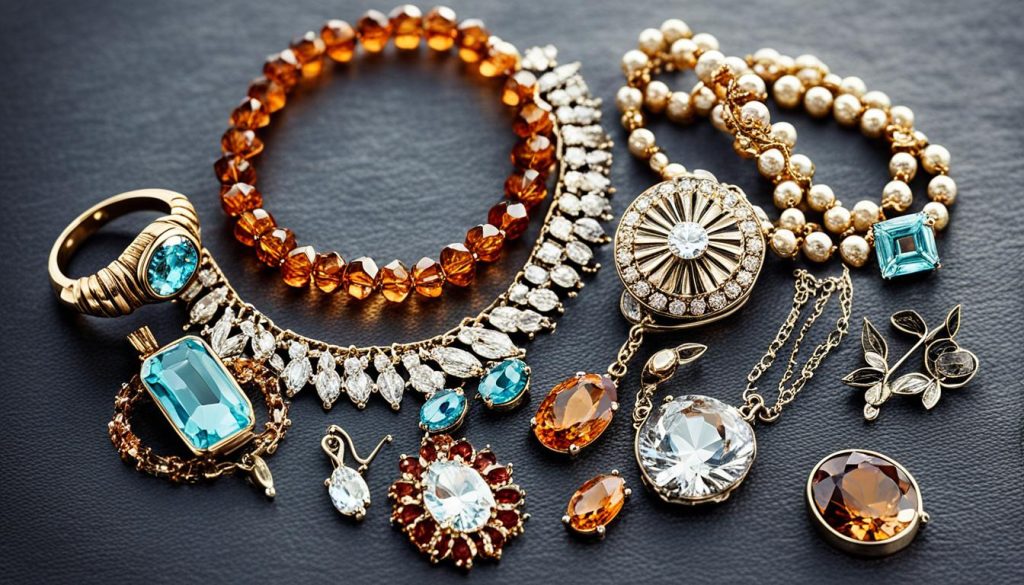
Buying Jewelry Tips
When it comes to buying jewelry, making the right choices is crucial to ensure a satisfactory purchase. Whether you’re looking for a special piece for yourself or a gift for a loved one, here are some essential tips to consider:
- Set a Budget: Determine your budget before you start your search. This will help you narrow down your options and avoid overspending.
- Identify Your Preferences: Consider what aspects of jewelry are most important to you. Are you looking for a specific material, gemstone, or design? Knowing your preferences will help you focus your search.
- Research Reputable Jewelers: Take the time to research and choose a reputable jeweler. Look for customer reviews and ratings to ensure you’re buying from a trusted source.
- Ask for Certifications: When purchasing high-value jewelry, such as diamonds, ask for certifications from recognized gemological institutes like the Gemological Institute of America (GIA). This ensures the authenticity and quality of the gemstone.
- Check Authenticity: If you’re buying jewelry made with precious metals, such as gold or silver, make sure it’s stamped with the appropriate hallmarks to guarantee its authenticity.
- Try It On: Whenever possible, try the jewelry on before buying. This allows you to assess its comfort, size, and fit, ensuring it suits your personal preferences and style.
- Consider Return and Warranty Policies: Familiarize yourself with the seller’s return and warranty policies. Knowing the options available to you in case of any issues or dissatisfaction will give you peace of mind.
With these tips in mind, you can confidently navigate the process of buying jewelry and make informed decisions that align with your preferences and budget.
Example Buying Jewelry Tips Table
| Tip | Description |
|---|---|
| Set a Budget | Determine your spending limit to avoid overspending. |
| Identify Your Preferences | Consider the material, gemstone, or design that you prefer. |
| Research Reputable Jewelers | Read customer reviews and choose a trusted jeweler. |
| Ask for Certifications | For high-value purchases, request certifications from reputable gemological institutes. |
| Check Authenticity | Ensure jewelry made with precious metals has the appropriate hallmarks. |
| Try It On | Whenever possible, try the jewelry on to assess comfort and fit. |
| Consider Return and Warranty Policies | Familiarize yourself with the seller’s policies to know your options. |
The Role of Jewelry in Society
Jewelry has long played a significant role in society. It has served as a form of self-expression, allowing individuals to showcase their personal style, beliefs, and status. Jewelry can also act as a social marker, conveying information about one’s social standing, cultural background, and affiliations. In some societies, specific jewelry is worn during special occasions or ceremonies, symbolizing rites of passage or important milestones. Additionally, jewelry has been used as a means of cultural exchange, as artisans and traders have created unique designs influenced by different regions and traditions.
Furthermore, jewelry serves as a tangible representation of an individual’s taste and identity. It allows one to express themselves through the choice of materials, design, and symbolism. Whether it’s an elegant diamond necklace or a stack of colorful bracelets, jewelry provides a way for people to communicate their personality and values to the world.
Jewelry has the power to evoke emotions, spark conversations, and create connections. It can serve as a conversation starter, eliciting compliments and inquiries about its meaning or origin. By wearing jewelry, individuals can forge both personal and social connections, as others may share similar interests or appreciate the craftsmanship and beauty of the pieces.
“Jewelry has the ability to tell stories without words. Every piece carries a unique narrative, be it a family heirloom passed down through generations or a modern piece of art that captures the essence of self-expression.” – Jewelry expert
Moreover, jewelry plays a role in cultural traditions and ceremonies. From wedding rings symbolizing the union of two individuals to religious jewelry representing faith and spirituality, these pieces have deep-rooted cultural significance. Jewelry can signify social status, community affiliations, and adherence to cultural customs.
The influence of jewelry extends beyond personal adornment. It has made a significant impact on the global fashion industry and serves as a source of inspiration for designers, artists, and artisans. Jewelry design reflects current trends, historical influences, and innovative techniques. It encompasses a wide range of styles, from minimalist and modern to intricate and elaborate designs.
Jewelry as a Form of Self-Expression
Jewelry provides a means for individuals to express their unique identity and creativity. It allows for the exploration of personal style and the communication of individuality. By wearing jewelry that resonates with their personality, people can project an image that aligns with their values, tastes, and aspirations.
Whether it’s wearing a statement necklace to showcase boldness and confidence or donning delicate earrings to exude elegance and femininity, jewelry offers endless possibilities for self-expression. It allows people to curate their own identity, emphasizing the qualities and characteristics they wish to highlight.
Furthermore, jewelry can hold sentimental value, representing cherished memories, relationships, and milestones. It can encapsulate the love and bond shared between individuals or act as a reminder of significant life events. The emotional connections associated with jewelry make it a powerful tool for self-expression and preserving meaningful moments.
| Role of Jewelry in Society: | Jewelry as a Form of Self-Expression: |
|---|---|
|
|
Jewelry as an Art Form
Jewelry is often regarded as more than just a decorative accessory; it is recognized as an art form in its own right. The process of designing and creating jewelry involves a combination of creativity and craftsmanship, resulting in unique and aesthetically pleasing pieces. From the selection of materials to the intricate details of the design, jewelry represents artistic expression and serves as a tangible manifestation of the artist’s vision.
Artistic expression in jewelry design can be seen in various elements such as the choice of materials, colors, textures, and forms. Jewelry designers often experiment with different materials, including precious metals, gemstones, and unconventional materials, to push the boundaries of traditional jewelry making. The fusion of different materials and the incorporation of unique design techniques result in exceptional pieces that challenge conventions and provoke thought.
Artists have long recognized the artistic potential of jewelry, using it as a medium for personal expression and exploration. Jewelry as an art form allows individuals to engage with aesthetics and beauty on a more intimate and wearable level, blurring the line between fine art and functional accessories.
Many jewelry designers are considered artists in their own right. Their creations can be seen as wearable works of art that evoke emotions, tell stories, and provoke meaningful conversations. These designers tirelessly push the boundaries of jewelry design by experimenting with unconventional materials, embracing innovative techniques, and challenging traditional notions of beauty.
Exploring New Concepts and Techniques
Jewelry as an art form provides a platform for designers to explore new concepts, techniques, and themes. It allows them to break free from traditional constraints and create pieces that are thought-provoking and visually captivating. From avant-garde designs to conceptual pieces, the world of jewelry as art constantly evolves and reflects the ever-changing nature of artistic expression.
Appreciating Aesthetics and Beauty
One of the unique aspects of jewelry as an art form is its wearable nature. Unlike other art forms that are displayed in galleries or museums, jewelry allows individuals to carry a piece of art with them wherever they go. It enables people to appreciate the aesthetics and beauty of an artwork on a personal and tangible level, creating a deeper connection between the wearer and the piece.
As an art form, jewelry serves as an extension of one’s personal style, allowing individuals to express themselves and make a statement. Whether it’s a bold and avant-garde piece or a delicate and intricate design, jewelry offers a means of self-expression that goes beyond words.
Overall, jewelry as an art form bridges the gap between aesthetics, craftsmanship, and personal adornment. It showcases the limitless possibilities of artistic expression and offers a unique way for individuals to engage with art in their everyday lives.
Jewelry Conservation and Preservation
Jewelry conservation and preservation are crucial for safeguarding the integrity and value of your precious pieces. By implementing proper storage, cleaning, and handling techniques, you can prevent damage caused by harsh elements, chemicals, and physical stress. Regular inspections and professional cleaning will help maintain the brilliance and appearance of gemstones and metals.
Proper jewelry storage is essential to prevent scratching and tangling. Consider using protective pouches or boxes with soft linings to keep your jewelry safe and secure.
When it comes to cleaning your jewelry, remember to follow specific instructions based on the materials used. Different gemstones and metals require different care. It’s always a good idea to consult a jeweler or refer to the manufacturer’s guidelines for cleaning and maintenance.
For comprehensive care and restoration needs, it’s advisable to seek professional jewelry restoration services. These experts have the knowledge and skills to address any issues or damages your jewelry may have sustained, ensuring the longevity of your valuable pieces.
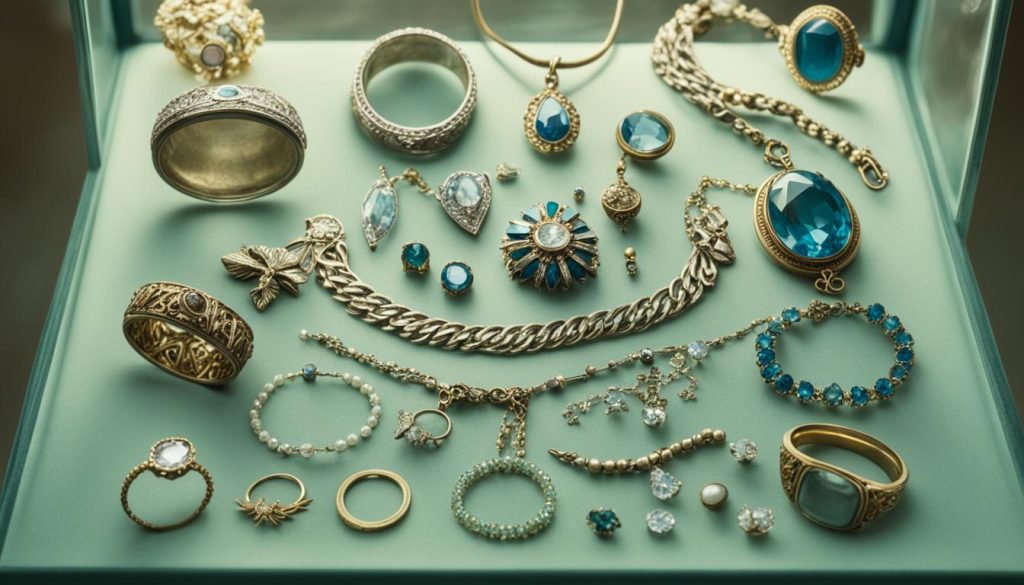
Preserving your jewelry not only helps maintain its beauty and value but also allows you to pass down these cherished pieces as family heirlooms. Embrace the responsibility of caring for your jewelry, and it will continue to sparkle and shine for generations to come.
Jewelry Collecting
Jewelry collecting has gained immense popularity as a fulfilling hobby and smart investment venture. As a collector, you have the opportunity to acquire unique, rare, and historically significant pieces that hold intrinsic and sentimental value. Collecting jewelry can be an exciting journey, filled with the thrill of discovery and the joy of owning stunning pieces of craftsmanship.
One of the main attractions of jewelry collecting is the potential appreciation in value over time. Certain pieces, particularly those created by renowned designers or featuring exceptional gemstones, can see a significant increase in worth. The provenance of jewelry, its historical background and previous ownership, can also contribute to its value, making it an appealing investment.
To become a successful jewelry collector, it is essential to develop a deep knowledge of various styles, periods, and materials. This knowledge will enable you to make informed decisions when acquiring pieces for your collection. Understanding the intricacies of different styles and the significance of specific materials will enhance your ability to recognize valuable pieces and uncover hidden gems.
Collecting jewelry is not only a financially rewarding venture but also a means to appreciate the artistry and craftsmanship of past and present generations of jewelers. Each piece in your collection offers a glimpse into the creative genius and skill of its maker, reflecting the cultural and artistic trends of its time.
Collecting jewelry allows you to connect with the history of humanity, exploring the diverse expressions of beauty and personal adornment throughout the ages.
As a jewelry collector, you have the privilege of curating and preserving pieces of wearable art. Your collection becomes a testament to the ingenuity and creativity of human beings, showcasing the evolution of styles and techniques across different periods.
Take your time and explore the vast world of jewelry collecting, immersing yourself in the beauty and elegance of each piece. Whether you choose to collect specific styles, periods, or materials, the journey of jewelry collecting promises endless fascination and gratification.
| Benefits of Jewelry Collecting | Tips for Successful Jewelry Collecting |
|---|---|
|
|
Start your journey as a jewelry collector today, and immerse yourself in the captivating world of fine craftsmanship, timeless beauty, and extraordinary value.
Jewelry in Pop Culture
Jewelry has played a prominent role in pop culture, creating iconic moments and forever etching certain pieces in our collective memory. From Marilyn Monroe’s sultry performance of “Diamonds Are a Girl’s Best Friend” in the film “Gentlemen Prefer Blondes” to Elizabeth Taylor’s extensive jewelry collection, these moments have solidified the allure and glamour associated with jewelry. (First source, Second source)
Not only does jewelry make its mark in the entertainment industry, but it also takes center stage in movies, music videos, and red carpet events, showcasing exquisite designs by renowned brands and talented designers. Celebrities and influencers often become trendsetters, inspiring jewelry choices and making specific styles or pieces highly sought after. Whether it’s a statement necklace, a dazzling pair of earrings, or an elegant bracelet, jewelry adds that extra sparkle and completes the look of our favorite stars. (First source, Second source)
In pop culture, jewelry has become synonymous with status, sophistication, and self-expression. It can symbolize wealth, success, and a luxurious lifestyle. On the other hand, it can also be a means of showcasing individuality, creativity, and personal style. When we see our favorite celebrity donning a magnificent piece of jewelry, it captivates our imagination and inspires us to embrace our own unique sense of fashion. (First source, Second source)
Jewelry for Special Occasions
Jewelry holds a special place when it comes to commemorating significant occasions in life. Whether you want to express your love, celebrate a milestone, or simply make someone feel special, jewelry is the perfect gift choice. With its timeless appeal and personal touch, jewelry can beautifully capture the essence of these cherished moments.
Engagement rings are perhaps the most iconic symbol of commitment and eternal love. The exchange of these rings marks the beginning of a lifelong journey together. The dazzling sparkle of a diamond engagement ring represents the promise of a future filled with happiness and devotion.
Similarly, wedding bands hold immense significance as they symbolize the eternal bond between two individuals. These rings are a constant reminder of the vows and promises made on the wedding day. From simple and elegant bands to intricately designed ones, wedding bands come in various styles to suit personal preferences and individuality.
Besides engagements and weddings, jewelry is also popular for celebrating birthdays, anniversaries, and holidays. Birthstone jewelry, adorned with gemstones representing the birth month, is a unique way to celebrate another year of life. These pieces hold personal meaning and serve as a constant reminder of the special day.
When it comes to holidays, jewelry is a popular choice for expressing love and appreciation. Whether it’s a diamond pendant for Valentine’s Day, a pair of earrings for Christmas, or a charm bracelet for Mother’s Day, there is a piece of jewelry for every occasion. Jewelry adds an extra touch of thoughtfulness and sentimentality to these celebrations.
Customized and personalized jewelry also holds a special place in the world of gifting. Engraved initials, birthstones, or personalized messages can transform a piece of jewelry into a one-of-a-kind treasure. These personalized touches create a deeper connection and make the gift truly unique and meaningful.
In some cultures, specific jewelry is worn during religious ceremonies or festivals. These pieces often carry spiritual and cultural significance, and their presence enhances the overall experience of the occasion. They serve as a visible expression of faith and tradition, adding to the richness of the celebrations.
Irrespective of the occasion, jewelry remains a lasting symbol of love, appreciation, and the cherished moments we hold dear. Each piece tells a story and creates a connection that goes beyond the materialistic value. Jewelry continues to hold its special place in our hearts and serve as a timeless reminder of the beautiful chapters in our lives.
| Occasion | Recommended Jewelry |
|---|---|
| Engagement | A sparkling diamond ring |
| Wedding | Elegant wedding bands |
| Birthday | Birthstone jewelry |
| Anniversary | Personalized jewelry |
| Holidays | Themed jewelry for specific occasions |
| Religious ceremonies | Traditional religious jewelry |
Conclusion
Jewelry is more than just beautiful accessories; it carries historical, cultural, and personal significance. Throughout the ages, jewelry has been a symbol of status, spirituality, and individual expression. From the classic designs of solitaire diamond rings to the bold and oversized statement pieces, jewelry styles cater to different preferences and fashion trends.
Understanding the various types of jewelry, materials used, and buying tips can enhance your appreciation for this timeless form of adornment. Whether you collect jewelry as a hobby, treasure it as a personal memento, or wear it to make a fashion statement, jewelry has the power to bring joy and meaning to our lives. It serves as a reminder of important moments and milestones, and reflects our individuality and cultural heritage.
So next time you admire a delicate necklace, wear a pair of sparkling earrings, or proudly display a cherished family heirloom, remember the rich history and significance behind each piece. Begin your journey into the world of jewelry with confidence and knowledge, and let these precious adornments elevate your style and tell your unique story.
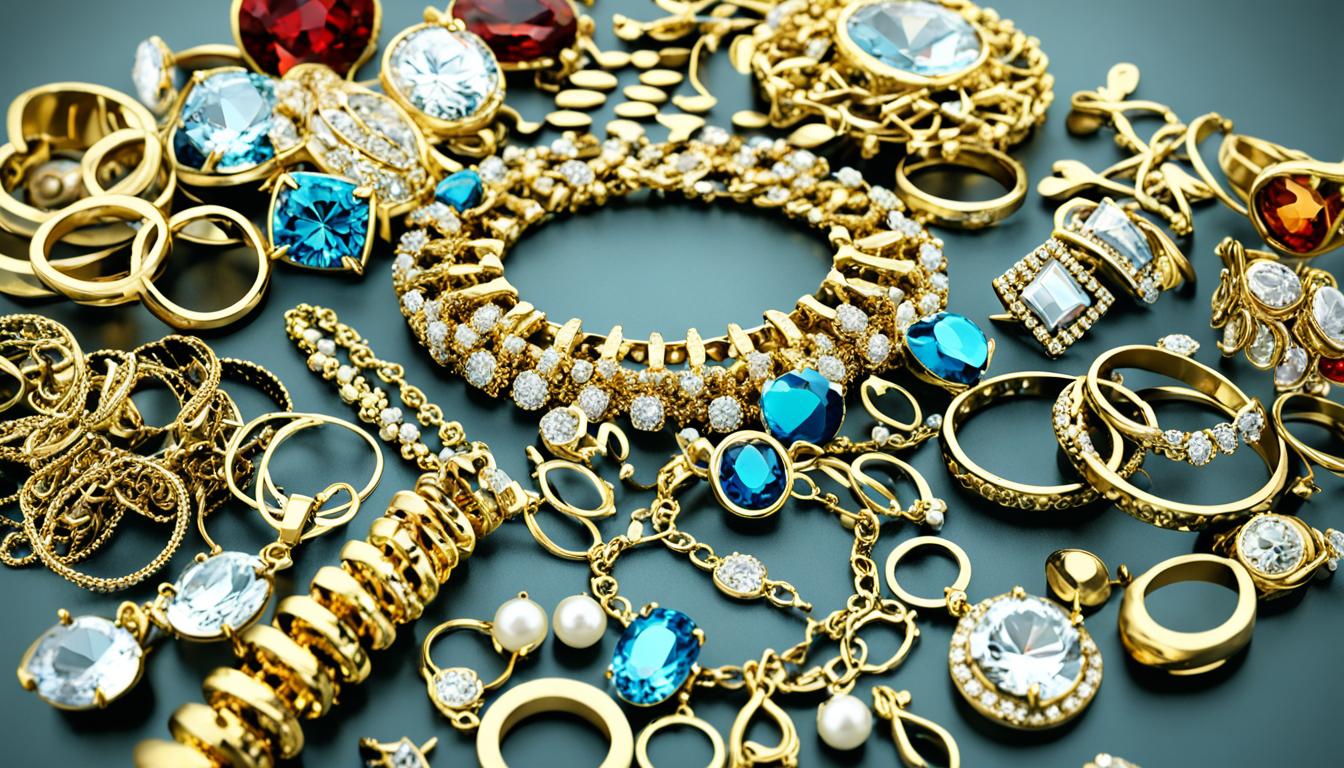
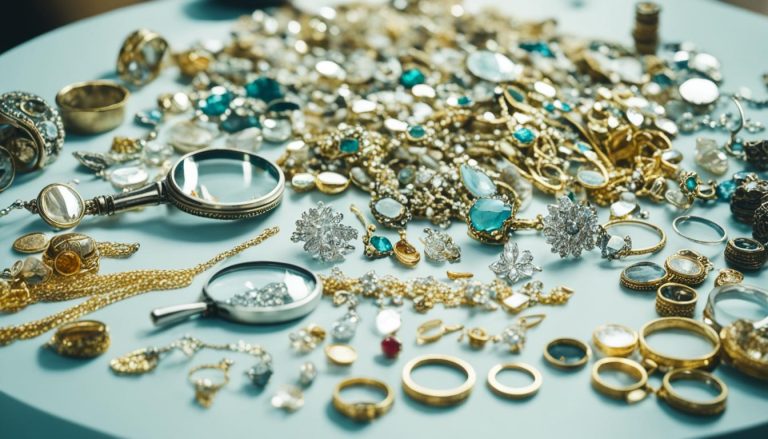




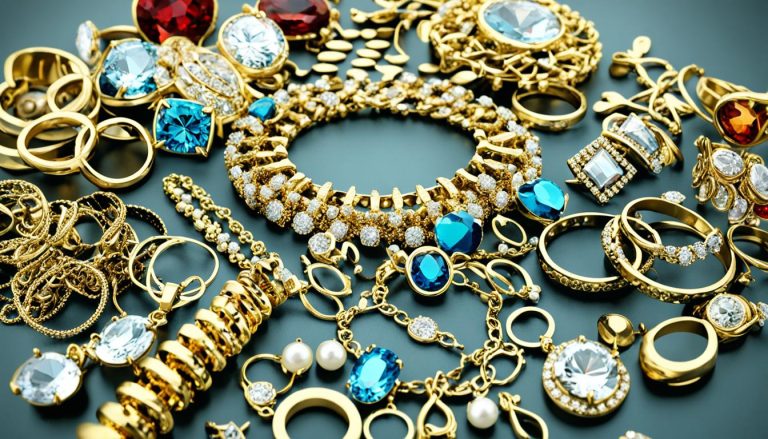
+ There are no comments
Add yours